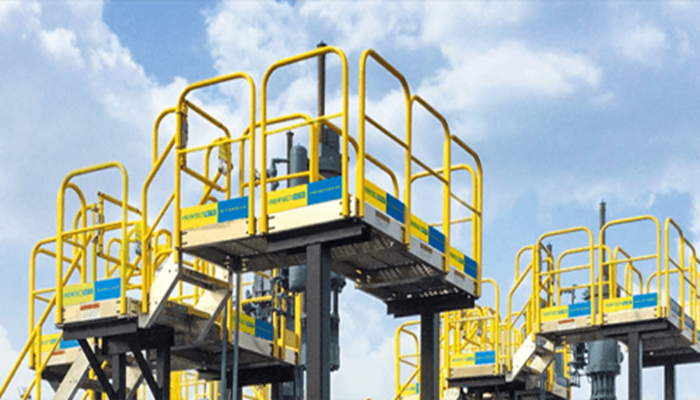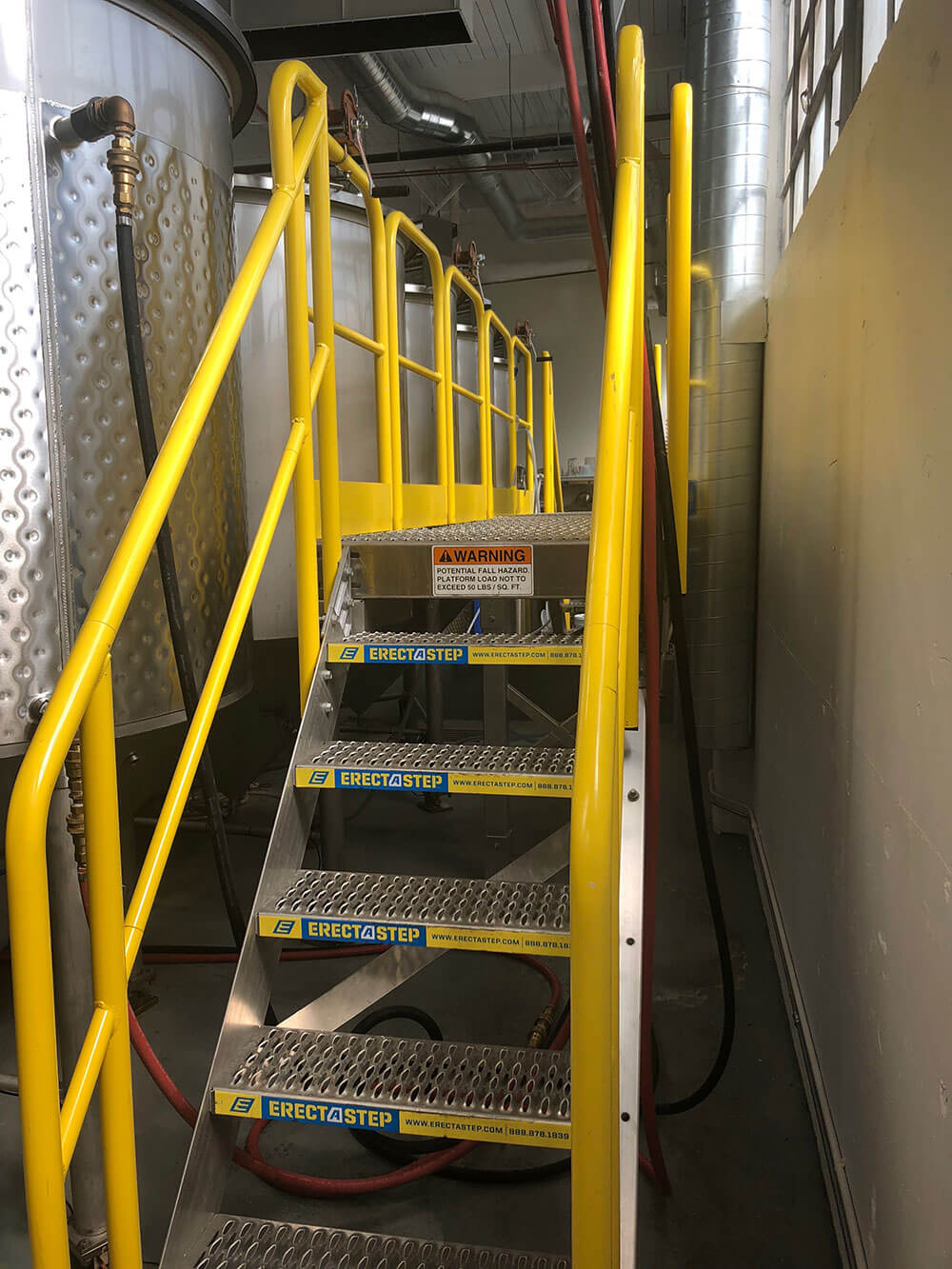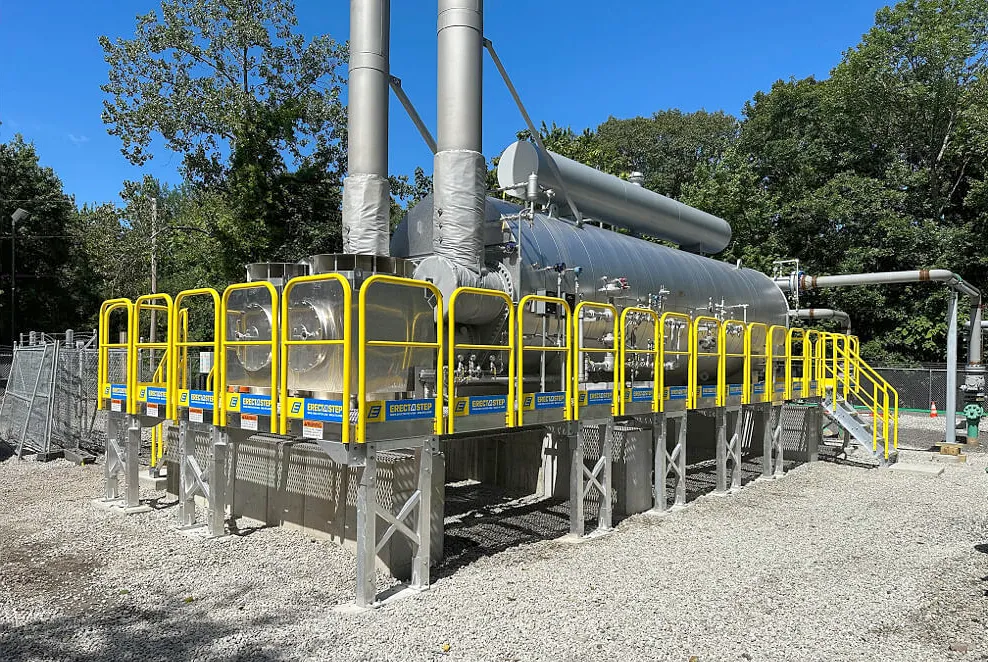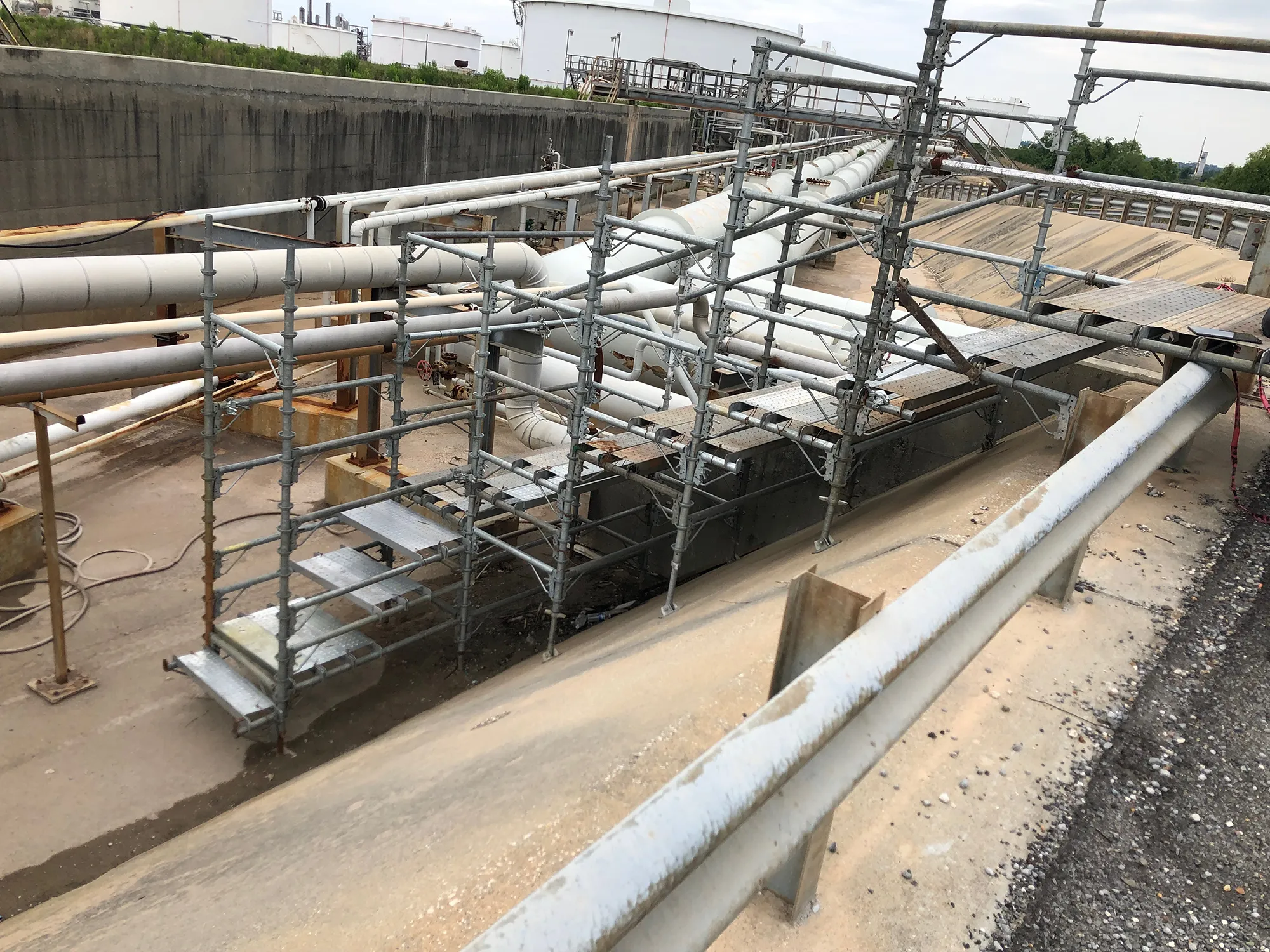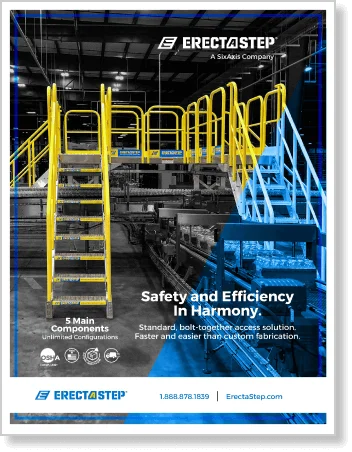A toeboard (also known as kickplate) when used for work platforms and stairs, is a safety feature designed to prevent tools, materials, or other objects from falling off the edge of a platform or stairway. This is particularly important in industrial and commercial environments where loose items can pose significant hazards to workers working below.
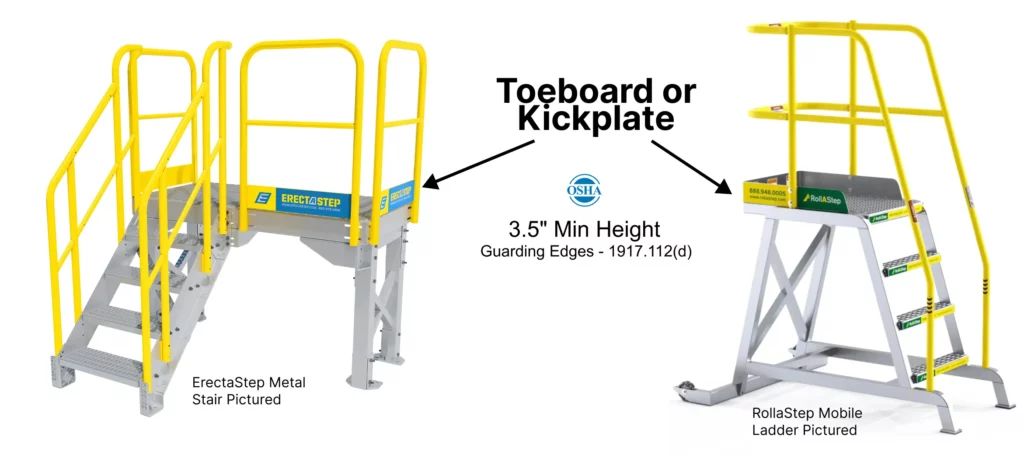
Key Features and Details:
- Material: Made from durable materials such as steel or aluminum, toeboards are designed to provide long-lasting performance and resistance to environmental factors.
- Dimensions: Typically, toeboards are around 3.5 to 4 inches high, though this can vary based on specific safety requirements and industry standards.
- Installation: Installed along the edges of platforms and stairs, toeboards are mounted flush against the walking surface. This installation creates a barrier that productively prevents objects from sliding off.
- Compliance: Toeboards meet various safety standards, including OSHA and IBC guidelines, to ensure they provide adequate protection and adhere to regulatory requirements.
- Usage: Especially useful in elevated work areas with a risk of items falling from the edge, such as scaffolding, mezzanines, and raised platforms.
Benefits:
- Durability: Constructed from strong materials to withstand environmental conditions and heavy use.
- Prevents Falls: Stops tools and materials from falling off edges, reducing the risk of accidents and injuries.
- Increases Safety: Provides an added layer of protection for workers, particularly in elevated or high-risk areas.
Examples:
- RollaStep TR Series Rolling Ladder: Features a full toeboard around the work platform to prevent slips and tool drops, increasing safety during warehousing and loading tasks.
- G Series Platform: Includes a full toeboard to prevent slips and tool misplacement, ensuring safe operation during use.
OSHA Compliance:
Toeboards must comply with OSHA guidelines, which specify:
- Height: Toeboards should be at least 3½ inches (8.9 cm) high from the top edge to the floor level.
- Strength: They must be capable of withstanding a force of 50 pounds (222 N) applied in any direction.
- Drainage Clearance: Allows for drainage clearance under the toeboard to prevent water accumulation and ensure proper drainage.
